Photo by Pak Han
Kero One — a San Francisco-based emcee/producer/DJ who rocked the stage at Hyphen's New Legacy release party last fall — has recently released his third solo album, Kinetic World. With Kero One playing a majority of the instruments, the album spans a wide variety of styles under the hip hop umbrella, and features artists such as Esna, Tablo of Epik High, and Dumbfoundead. Since the release of his first 12’’ Check the Blueprints in 2003, the former web designer went from distributing 50 copies to topping iTunes hip hop charts, touring the globe, and collaborating with the likes of Talib Kweli. Kero One, who described his music as “you can’t hold me back hip hop”, talked with Hyphen about his unconventional road to success, the evolution of his soul and groove-laden sound, and his resolve to be a positive force in the API and hip hop communities.
How did you first get into the hip hop scene and begin making music?
Kero One: I grew up listening to hip hop all my life, and in middle school I got into DJing. I also went to a lot of underground hip hop shows, and at the time there were a lot of kids outside freestyling and things like that. Back in the day there was also the Wake Up Show on 106 KMEL, where people can call in and freestyle. I called in when I was a freshman in high school, when Sway -- now of MTV fame -- was there. This was before cell phones, so I was hoping my mom wouldn’t pick up while I was rapping and yell, “Mike, I need the phone!” I ended up pulling it off and Sway gave me props. That was the spark-- from there I got into rapping and then producing.
On his unconventional path to discovery:
It’s kind of Interesting how a Korean American living in America got discovered in Japan first. In 2003 I released my first 12’’ record, which was a huge goal of mine; as a DJ, it was a huge personal trophy. I distributed 50 copies and eventually a couple landed in small record shops in Japan. A DJ found one and he played it that night at his club, and was bombarded with people asking about the record. There are a lot of record collector nerds in Japan both women and men -- unlike in the US where you got mostly dudes. So that led to more exposure among the avid record collectors and eventually a distributor in Japan contacted me and we made a business transaction, and next thing I knew I was touring the nation, and since then I’ve been there about five times; it’s been pretty crazy.
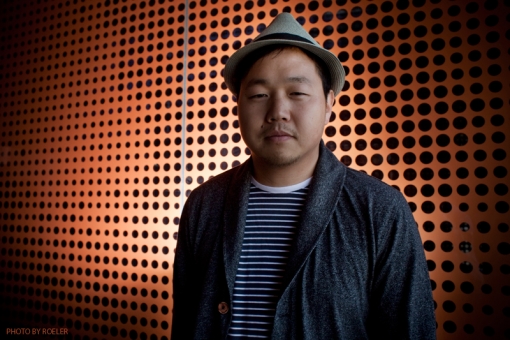
photo by Roeler
How did you build up your own record company, Plug Label?
I started Plug Label because I released my first 12" and didn’t have a label to back me. So I created my own, and eventually started releasing a few other artists. The whole concept behind Plug Label is supporting underground and artists who are underexposed. I wanted to help them using the connections I had, and I’m still doing that today. I opened up an office in downtown San Francisco, and that’s been keeping me busy. Most of the artists are from the San Francisco Bay Area, but I’ve also collaborated with people from different parts of the West Coast, like Aloe Blacc from Los Angeles, and Ohmega Watts, who is originally from Portland [check out the recently released “Stay on the Grind” music video with Ohmega Watts here].
Growing up, were the skate scene and the hip hop scene closely linked?
When I was in middle and high school I was a hardcore skater, and back then there was a huge relationship between the skate scene and underground hip hop -- and graffiti of course, because you’re rolling around town seeing street art everywhere you go. You’d watch skate videos and they would release songs that weren’t released yet to the public, like Hieroglyphics, Souls of Mischief, and a lot of other Bay Area groups.
How does beings a producer and DJ as well as an emcee influence your songwriting and production process?
It gives me full control, to the point where I’m able to do my own scratching and production, so I’m able to see the process from the beginning to the very end, with only my eyes. It’s also allowed me to reach out to other people and be like: Hey what do you think -- my head’s been stuck in this space for such a long time. But for the most part, it’s all 100% my original work straight from my head, with the exception of having a featured artist or musician. I’m able to see the vision from the beginning and execute it the way I want. Also, when I’m on stage performing, I’ve incorporated some live elements that I played on the original recording, which I feel makes it cooler to watch as a crowd member.
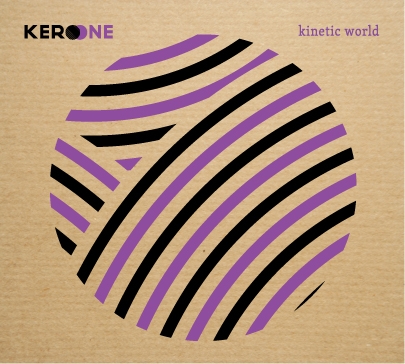
How has your sound evolved from your first 12’’ to the latest album Kinetic World?
When I came out with my first 12”, one of things that catapulted me outside a lot of other artists at the time was that I was focused heavily on early ‘90s hip hop/jazz/soul. In the stores in Japan, they put me in the “jazzy hip hop” section. From there on out, everyone said: Kero One is the epitome of “jazzy hip hop”. That label was there for a bit, then I released my second album Early Believers (see Hyphen review here), and now with this album Kinetic World, I’ve kept that jazzy hip hop foundation, but at the same time I’ve evolved quite a bit and changed my sound in a lot of the songs. I’m into a lot of different kinds of music -- not just underground hip hop , but everything -- so I’ve incorporated what I enjoy listening to and what I like to play as a DJ.
My first album was more mellow and chill, and Early Believers incorporated a more soulful element, with more singing and upbeat stuff. With Kinetic World I didn’t want to be pinned down in any genre, so I meshed it all under the umbrella of hip hop: a little bit of electro, jazz, soul -- even some funk and rock influences. It was fun to do. I always wanted to be known as the guy that can produce anything and be very versatile.
Movies are starting to inspire me as well; I like the idea of sonically producing visual images.
On the track “Asian Kids” and its potentially “controversial” lyrics:
It was an idea I was thinking about for a while, but I didn’t want to do it all by myself. I wanted featured guests who didn’t only have an understanding of the issues of being Asian American in hip hop, but were great artists doing big things. The concept evolved last year when I was on tour with Epik High and Far East Movement. We were on a tour bus talking about the lack of Asian males in entertainment in general, and how they’re typecast as martial arts dudes or nerds. So that idea came back and I reached out to Dumbfoundead -- who’s an amazing battle rapper -- as well as MYK and Tablo, a member of the group Epik High. We collaborated and just ran with it -- I didn’t really tell them what I wanted them to talk about, I just presented the concept. What came back was really interesting.
I also wanted to make the track kind of in-your-face and hardcore, so I implemented that “dirty south” influence and harder beats, plus some house-electro at the end of the song. It’s been really fun to perform it on stage, because there’s a lot of energy there. As far as the lyrics, it was a risky move, but this is real talk. With Tablo’s line: A skinny Asian boy has many names/ usually chink, fob, gook, and of course Bruce Lee/ but on a loose leaf I couldn’t unlearn all of that/ so I wrote profusely and it turned into rap.
I think that pretty much summed it up for all of us.
On Kinetic World’s recurring theme of community and leaving a positive legacy:
I feel like you have two ways to go in life: pessimistic or optimistic. For me, I just try to keep my head up and keep pushing. As I’ve been making more music I realized that, there is a responsibility there, especially in hip hop, where you don’t find a lot of positive messages. I feel like there are a lot of young kids listening, and I want to remind them that the choice is there. But ultimately, it’s just a reflection of who I am and how I perceive life at the moment: you got to keep pushing, stay on the grind, and it’s even a reminder for myself sometimes. I’m kind of now known as the “positive rapper” in some circles. I’m not mad though.
What’s next for Kero One:
I’m continuing to promote the latest release, but I feel like sometimes when you release new material, people forget about your other stuff. So I’m continuing to work on videos and visual projects with music from previous albums.
I’ll also be focusing heavily on production for the next few years, including an album for Esna (who appeared on Kinetic World track “The Fast Life”), a young Korean American singer with a massive voice, who garnered her fan base through YouTube.
-----------------------
Kero One has a tour planned in Asia for the end of February, and an all-ages show this month in San Francisco (check site for updates).






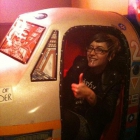
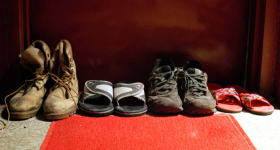
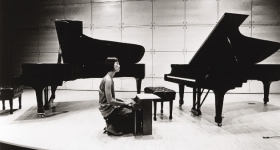

Comments
Thanks for the Q Tim- I checked in with Kero and the show has been postponed, date TBA- so please still check the site for updates.